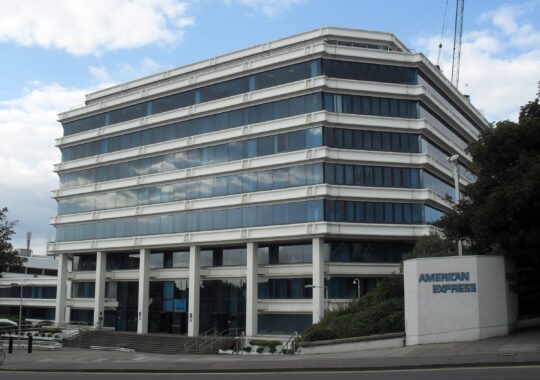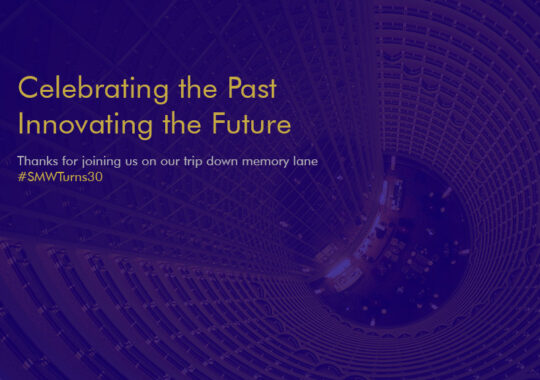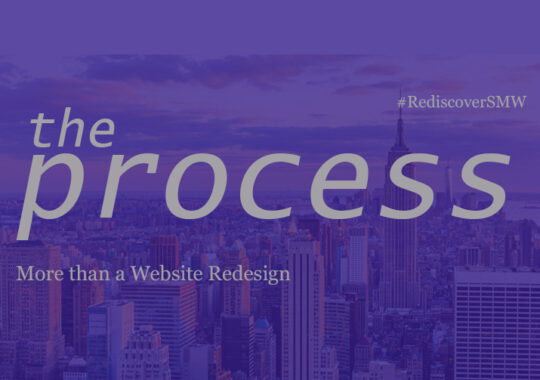Previously published by SMPS-Marketer Magazine in their February 2016 issue
By Meredith Lovejoy, Shen Milsom & Wilke LLC, and Kirsten Sibilia, Assoc. AIA, LEED AP, Dattner Architects
Until 1980, architects were banned from using competitive tools and techniques to proactively seek clients or communicate the value of their services. In our 35-year professional history, marketers have championed tremendous innovation.
The role of the marketing professional has moved beyond its original (narrow) purpose of proposal production and has evolved to include business strategy, corporate identity and brand, team building, strategic hires, and mergers or acquisitions, in addition to new business development, proposal writing, and communications. To achieve results and succeed often requires an evolution of the culture to grow the firm’s business and legacy.
Marketing professionals now work to help their firms discover their unique positioning, including how to differentiate the firm’s core values, and how to position the firm’s services in a competitive marketplace. We focus on the vision of what a firm’s potential is, what talent exists internally, how project delivery has to adapt to changing industry standards, and what new services might be offered to better meet client demands as influenced by the economy and technology trends. In addition, savvy marketers must offer guidance and expertise on marketing and communications trends and advances. They must have a keen understanding not only of their firm’s strengths and weaknesses, but also of leadership’s strategic goals. This knowledge, combined with an awareness of external forces in the marketplace, enables us to both visualize and affect change from within.
Marketer as Change Agent
While marketing, business development, and communications professionals are largely outnumbered within their A/E/C firms, our ability to impact the culture of an organization is enormous. Sometimes it takes an outside perspective to have a clear vision for the future or to implement change. Often, A/E/C firms began as individuals or partnerships wishing nothing more than to practice their trade and make a living doing it. A firm’s culture was created in this start-up environment, and the habits of the original founders persist in the business practice of today, no matter how many generations or successions have taken place or how large the firm has grown. Approaches to change will vary depending on the size, age, and structure of a firm, but within these variations, the marketer’s role can be vital.
Change happens at all levels. Whether you are a marketing coordinator or CMO, there are opportunities to have a meaningful impact. To undertake a campaign for change, it is critical to be well-informed about your firm, understand your industry, and know your competition. Understand the firm leadership’s key goals, and seek out occasions that support those with initiatives.
Change is often thought of in the form of something dramatic, such as a rebranding or restructuring— and those certainly are critical opportunities for marketers to demonstrate their value to an evolving firm. But as change agents, we often find it most rewarding to seek out initiatives that align with the firm’s goals and address the deficits you see the firm struggling with. Begin with a clear vision and rationale for what is needed. Change is not an end in itself; nor will it be sustainable if the objective lacks integrity.
True change takes vision, creativity, and perseverance. Outline the steps that are needed, and secure a champion at the principal or leadership level.
Not every marketing professional is a change agent, and not every campaign for change is successful. But if that is your calling, and that is what your firm needs, your marketing role is the springboard.
One rule of thumb is to know the limits of your firm’s principals. They may have hired you because they want a paradigm shift in their business process, but you run the risk of losing their support and alienating key people if you push an agenda too quickly. Successful change agents are patient, yet also persistent. They are knowledgeable about the return on investment of the campaign being considered. They must ask tough questions and be prepared to answer equally tough questions. It is important to know how to compromise and when it is time to stand down.
Campaigns for Change
Even when the change we seek is well- informed and much-needed by our firms, and our plans are well-developed, we are not always successful. Sometimes we fail because the firm culture is not ready. Or sometimes we are not the right people to be leading the change. Sustainable change happens slowly. In some cases, it is helpful to initiate smaller campaigns and build trust and a track record in your organization before taking on bigger challenges. Having allies at all levels has proven to be critical to success.
Marketers have been campaigning for change since the beginning of our short history in the A/E/C industry. Various factors have including economic recession, catastrophe, increased competition, improvements to technology and software, the globalization of the economy, and even the proliferation of the Internet (something we all take for granted now). Each of these has served as a catalyst for marketers to influence what they do and how they do it to position and sell business.
Good economic conditions have also given way to change. Marketers have focused on crafting their firm’s message, strengthening their brand, and developing communication campaigns; implementing CRM; photographing and cataloguing projects; developing and honing the marketing plan and budget; and developing and implementing go/no-go criteria to build a desired portfolio.
In today’s economy, clients conduct due diligence into a firm’s reputation, brand, and capabilities and often know who they want to work with before the RFP is released. Change agents are finding new ways to message their firm’s best assets.
Metrics and Key Performance Indicators
How can we gauge the success of a campaign for change? While traditional metrics such as hit rate, number of new clients, and booked revenue tell the story, they don’t always apply. Less traditional metrics include retweets and “likes,” website analytics, and increased visibility or recognition by peers and clients. Before you begin a campaign for change, take the time to understand what key performance metrics will be meaningful to you and to firm leadership, and set up a process to allow you to capture them to support the cause. Be sure to report your activities within your department to ensure that your progress is acknowledged.
Lessons Learned
According to Lovejoy, her biggest failure was at a firm where she believed the mandate was for change, but she was impatient. She did not wait for buy-in from key principals. By running roughshod into what she believed was best for the organization, she alienated people she needed to have on her side. That was a tough setback. She might have been able to succeed if she allowed her own goals and needs to manifest. Instead she accepted another job and moved on. Another failure was when Lovejoy accepted a job as the director of marketing where there was no other marketing staff. This meant she was doing it all—strategy, communications, proposals, business development, event planning, graphics, and production. Marketing is a team sport; each person has skills they bring to the function. It is important to know one’s own strengths and weaknesses; Lovejoy feels she excels as part of a team.
Sibilia believes her biggest mistake came from believing that just because change was needed, she could make it happen. She hadn’t spent enough time to understand the undercurrents with the leadership group—and how risk adverse they were. A good part of that was the down economy, which had everyone wary and caused her as a marketer to feel that change was even more urgent. But changing the course of an established organization takes patience and perseverance—which were unavailable luxuries during the economic recession. Despite that situation, Sibilia still considers herself a catalyst for change. The motion she put into effect just took longer to take hold than she had planned and longer than she stayed at the firm.
Author
Guest Author

Kirsten Sibilia, Assoc. AIA, LEED AP
Principal
Dattner Architects









